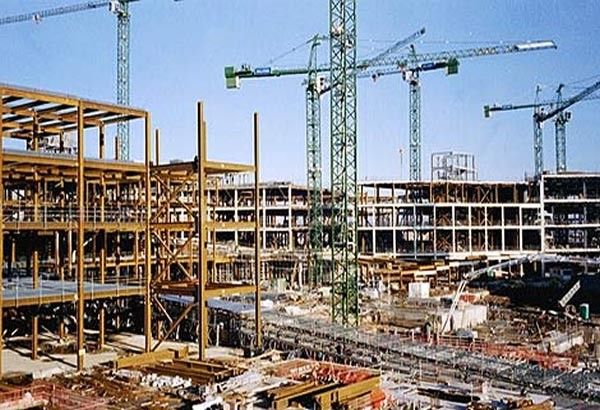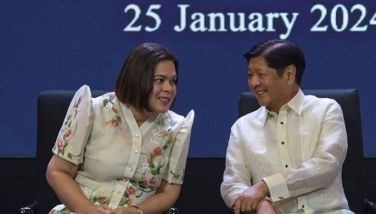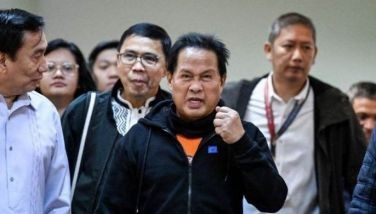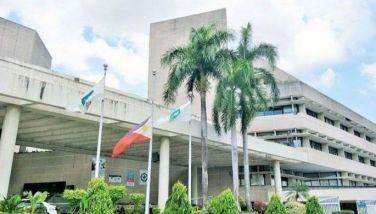DPWH uses tech vs graft, inefficiency

MANILA, Philippines — Plagued with anomalies involving ghost projects in previous years, the Department of Public Works and Highways (DPWH) is looking forward to permanently curbing corruption in the agency by geo-tagging all infrastructure projects being implemented across the country.
Public Works Secretary Mark Villar said the agency is ramping up its anti-corruption and transparency measures this year with the use of technology to monitor all of its over 20,000 projects.
The DPWH under Villar has started transitioning to a new monitoring system with a built-in geo-tagging feature that allows the agency to determine ghost projects and inaccurate reporting.
“We only implemented it fully around 2017. In 2018 we were able to finish it completely and now we’re working on the geo-tagging to complete the geo-tag of all the projects. We want to be 100 percent this year,” Villar said during a roundtable discussion with The STAR’s editors and reporters on Monday night.
Villar said about 20 to 30 percent of the more than 20,000 projects of the agency have been geo-tagged to date.
“We are working on geo-tagging all the projects, meaning at every stage of the construction there are geo-tagged photos. So, if you ask me for the status of a project in Samar, for example, then you see immediately the status through the geo-tagged photos,” said Villar.
He said geo-tagging would make project monitoring easier.
The Project and Contract Management Procedures and Application (PCMA) system, which has been developed with the help of the World Bank, plots photos submitted for monitoring in the exact geographic coordinates where it was taken, thereby confirming whether a project truly exists.
“It is impossible to fake it because geo-tagging uses real time photos through the satellite,” Villar said.
“When I came in it was being developed, but it wasn’t really a top priority. For me that was a top priority, especially now that analytics is a trend in business. Coming from the business sector, there is no big business that does not have a large computer system and accounting software. So even with us, we’re managing hundreds of billions worth of projects, we have to have a software,” he said.
With the aid of the satellite project tracking system, the DPWH has started cracking the whip on underperforming contractors.
Villar said 14 major contractors were blacklisted by his agency last year.
“Some of the companies we blacklisted are top 10 contractors. In the past, it’s hard to blacklist, especially if you don’t have the information and you’ll just rely on reports. Now, instantly we can get updates. That’s why in terms of blacklisting, just this past year about 14 major contractors were blacklisted,” Villar said.
He said the agency monitors slippages in any project.
“Before you disperse, they have to reach a certain level of accomplishment. If they fall below 15 percent slippage there will be a warning. After the third warning we ask them to do a catch-up plan. If they don’t follow the catch-up plan, we have to cancel the contract. Once we cancel the contract, automatically (they are) blacklisted,” he added.
The PCMA is improving transparency and accountability of physical and financial outcomes through the use of online geographic based status reporting and geo-tagged photos required to process the claims of contractors.
The use of geo-tagging is expected to provide a more accurate measurement of project accomplishments and determine whether certain infrastructure has been duplicated or if there is an overlap.
“Discretion begets corruption. You take away the discretion, you minimize corruption,” Villar said.?The Duterte administration has made infrastructure among its top priorities, with public spending on infrastructure projects targeted to reach P8 trillion to P9 trillion from 2017 to 2022.
With the DPWH being one of the lead agencies in the government’s Build, Build, Build initiative, Villar said construction of various infrastructure projects nationwide is in full swing, and Filipinos could expect to feel its positive impact even more this year.
Dredging machine acquisition
Instead of spending millions of pesos in bidding out dredging projects, the government is planning to buy its own dredging machines and have its own workers handle the projects themselves.
Villar said the DPWH is planning to acquire a dredging machine this year.
“We will buy a dredging machine, that is our priority. We want to buy ASAP (as soon as possible),” Villar said as he expressed belief that it would be more cost-efficient for the agency to have its own machine and men to dredge clogged rivers and waterways.
A dredging machine is estimated to be worth P70 million, which Villar said almost cost the same if they bid out dredging projects.
The government has been pouring public funds in contracting dredging projects, only to find out later that the dredged area needed to be dredged again within a short period of time.
Villar said they have yet to scrutinize the agency’s approved budget for this year before they could decide how many units of dredging machines to acquire.
He said that while the DPWH itself would be handling the dredging activities, it would still allow contractors if the dredging activity is a “component of the civil works of the project.”
The agency plans to buy two dredging machines per region. They have not yet identified the areas where these machines would be assigned, but will consider those that are often flooded.
If only a few dredging machines would be acquired, the DPWH plans to transport these from one priority area to another on board sea vessels or barges. To date, the agency has a dredging machine in Luzon.
Challenge
Villar said accomplishing projects on or before the targeted time is “very challenging” and requires the cooperation of all concerned government agencies.
He cited a memorandum issued by Executive Secretary Salvador Medialdea reminding concerned agencies to complete infrastructure projects on time. He said Medialdea’s move is beneficial to the public.
“It’s good that there’s a reminder as we need everyone’s cooperation to complete the project. Considering the number of projects we are doing, the permits to secure and other requirement are very challenging,” Villar said.
Probe
Villar said they would investigate reports that DPWH personnel were asked by an official of the Department of Budget and Management (DBM) to encode projects into the National Expenditure Program (NEP) of the 2019 budget.
“We would conduct our own in-house investigation. I asked about it (and was told) it was purely clerical,” Villar said.
During a House committee hearing on Feb. 6, it was mentioned that DBM Undersecretary Amenah Pangandaman supposedly summoned the DPWH employees to the DBM in July last year for the encoding and reformatting of projects for inclusion in the NEP.
It is being speculated that the projects encoded and reformatted were the P75-billion insertion in the DPWH budget.
Villar said three employees of the DPWH were asked to assist in the clerical task and based on information he gathered so far, it seemed that these employees were not aware of the effects of their actions. – With Evelyn Macairan
- Latest
- Trending































